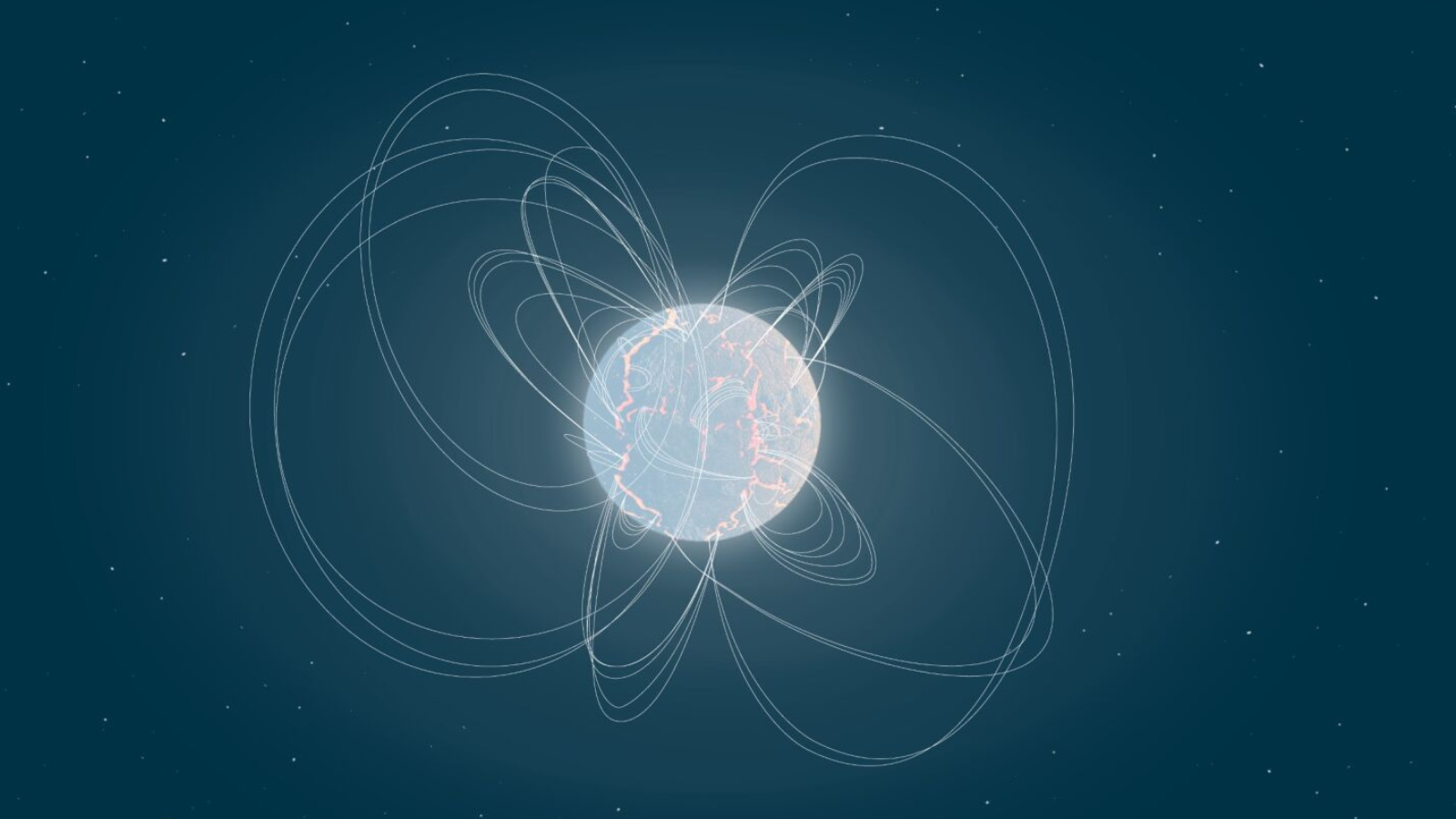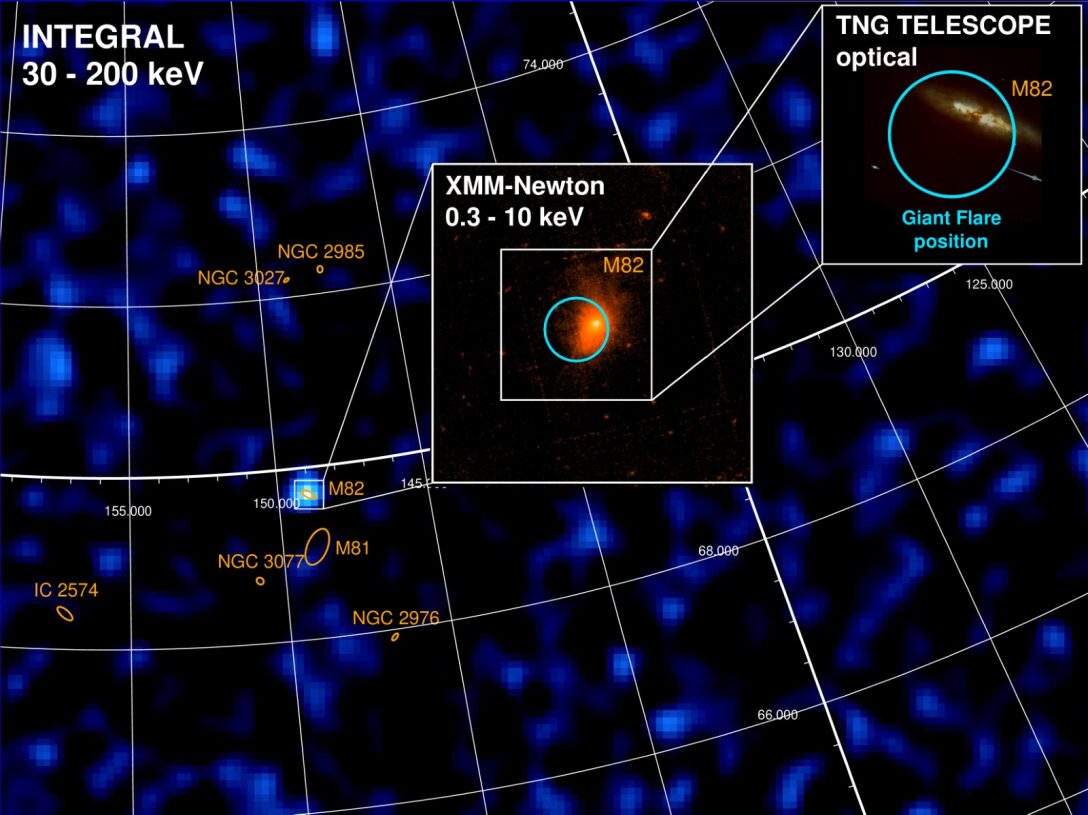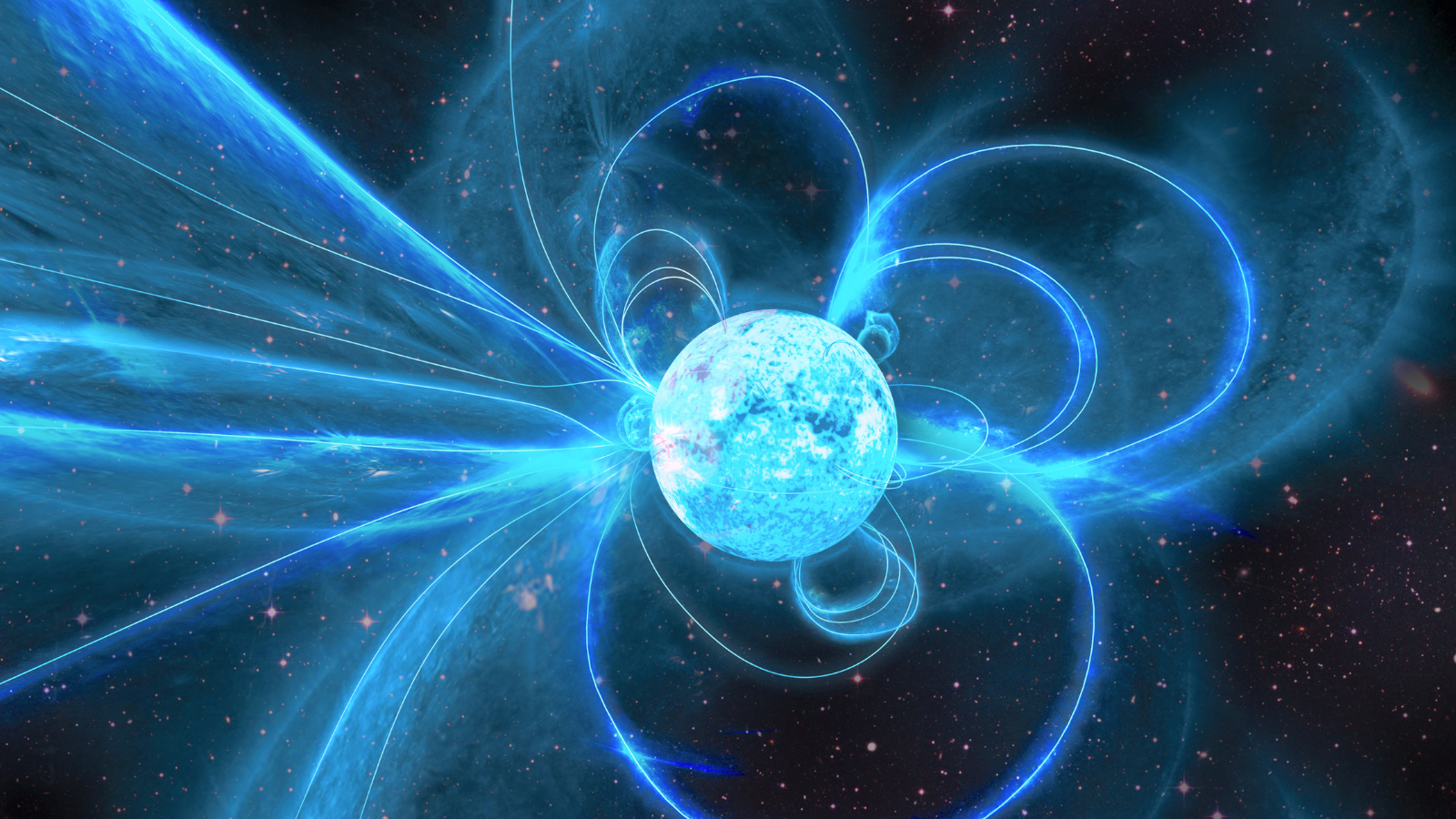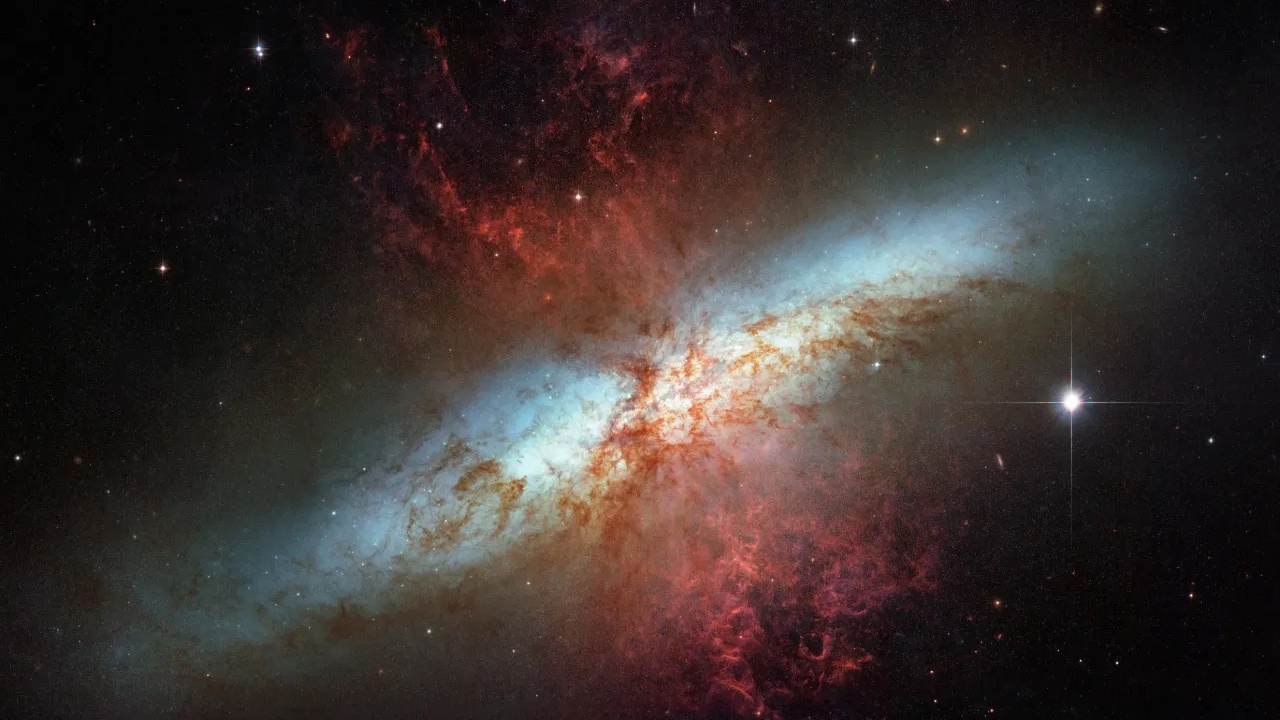
Astronomers believe they have found a rare, massive flare that erupted from an extremely magnetic dead star, or magnetar, that was bright enough to illuminate an entire galaxy. If true, the discovery would represent the first time gamma rays from a "recently deceased" neutron star erupting outside the Milky Way have been seen.
The flare was first spotted by the Integral Science Data Centre in Geneva in the form of a short blast of high-energy gamma rays lasting just a tenth of a second. Integral sent an alert to astronomers who, just 13 seconds after the flare, realized these gamma rays seemed to be coming from the bright galaxy Messier 82 (M82), nicknamed the "Cigar Galaxy" due to its elongated shape; the Cigar Galaxy is located around 12 million light-years from Earth.
All of this, however, left astronomers with a mystery to solve. Was this a fairly common gamma-ray burst they were seeing from this galaxy, which also houses intense star formation, or did it definitely represent the rare flaring of a highly magnetic magnetar?
Related: One of the universe's most 'extreme' dead stars just sprang back to life unexpectedly
"We immediately realized that this was a special alert," Sandro Mereghetti, research leader and a scientist at the National Institute for Astrophysics (INAF–IASF), said in a statement. "Gamma-ray bursts come from far away and anywhere in the sky, but this burst came from a bright nearby galaxy."
To investigate the flare of gamma rays, Mereghetti and colleagues quickly performed follow-up observations of the source of the blast with the XMM-Newton space telescope. They reasoned that, if this blast of gamma rays was a short gamma-ray burst created as the result of a powerful event like two neutron stars smashing together and merging, then there should also be an associated afterglow seen in X-rays and visible light. This event would have also set spacetime "ringing" with ripples called "gravitational waves."
"XMM-Newton's observations only showed the hot gas and stars in the galaxy," team member and INAF researcher Michela Rigoselli said. "If this explosion had been a short gamma-ray burst, we would have seen a fading source of X-rays coming from its location, but this afterglow was not present."
Integral's role in enabling researchers to be quick off the mark in investigating this gamma-ray flash was — apologies in advance — integral to determining its true origins and tracing it back to a magnetar eruption in M82.
"When unexpected observations like this are picked up, Integral and XMM-Newton can be flexible in their schedules, which is essential in time-crucial discoveries," Integral project scientist Jan-Uwe Ness explained in the statement. "In this case, if the observations had been performed even just a day later, we would not have such strong proof that this was indeed a magnetar and not a gamma-ray burst."

A deceased and flaring magnetar
Magnetars are a type of neutron star remarkable for their incredibly powerful magnetic fields. Like all neutron stars, magnetars are born when a star with at least eight times more mass than the sun exhaust the fuel they need for nuclear fusion at their cores. This ends the outward force connected to radiation pressure that has protected these stars from collapsing under the influence of their own gravity for millions, or sometimes billions, of years.
With this protection ended, the core of this dying star collapses while the outer layers representing the majority of the star's mass are blasted away in a supernova explosion. The result is a dead stellar core with a mass between one and two times that of sun crammed into a width no greater than 12 miles (20 kilometers).

This rapid collapse results in neutron stars being composed of the densest known matter in the universe, a mere tablespoon of which would weigh 1 billion tons if it were brought to Earth. There are two other extreme consequences of this collapse, too.
Like an ice skater on Earth takes advantage of the conservation of angular momentum by drawing in their arms to increase the speed of their spin, the rapid radial reduction of a dying stellar core causes a newborn neutron star to spin at incredible speeds. Some young neutron stars have been found to spin as fast as 700 times per second.
Also, the collapse causes the field lines of the stellar core's magnetic field to cram closer together. The closer the field lines are, the more powerful a magnetic field is. That means some neutron stars have the most powerful magnetic fields in the entire cosmos. Both the rotational speed and intense magnetism of neutron stars dim as these stellar remnants age.
"Some young neutron stars have extra strong magnetic fields, more than 10, 000 times that of typical neutron stars. These are called magnetars. They emit energy away in flares, and occasionally these flares are gigantic," European Space Agency research fellow Ashley Chrimes said.

Thought to be caused when "starquakes" on the surface of these highly magnetic young neutron stars disturb their intense magnetic fields, magnetar flares are both gigantic and vanishingly rare.
In 50 years of observing the cosmos in gamma rays, humanity had previously caught just three flares. Those were found in 1979, 1998 and 2004, and they were all from magnetars located in the Milky Way.
Yet, maybe it is lucky that flaring magnetars are rare. The example seen in Dec. 2004, caused by a magnetar 30,000 light-years from Earth, was so powerful that it actually affected the upper atmosphere of our planet. The effect was similar to that caused by solar flares, but the sun is 1.9 billion times closer to Earth than the magnetar behind the 2004 gamma-ray flare. Allow that to sink in.
The Integral discovery represents the first time a flare from a magnetar outside the Milky Way has been spotted. The team thinks, however, that some of the other short gamma-ray bursts seen by Integral were actually flares from extragalactic magnetars, too.
"However, outbursts of such short duration can only be captured serendipitously when an observatory is already pointing in the right direction," Jan-Uwe said. "This makes Integral, with its large field of view, more than 3,000 times greater than the sky area covered by the moon, so important for these detections."
The magnetar's position in M82 is significant because this bright galaxy is home to a burst of intense star formation. This confirms that, in such starburst regions, massive stars "live fast and die young," leaving young neutron stars as turbulent, rapidly spinning magnetars.
The team will now search for more magnetars in starburst galaxies to help better understand the lives and deaths of massive stars in these regions, and to better understand how neutron stars evolve over time.
"This discovery opens our search for other extragalactic magnetars," Chrimes said. "If we can find many more, we can start to understand how often these flares happen and how these stars lose energy in the process."
The team's research was published on Wednesday (April 24) in the journal Nature.







